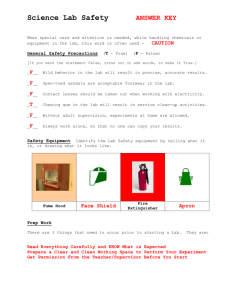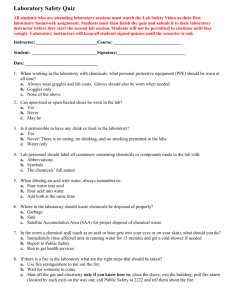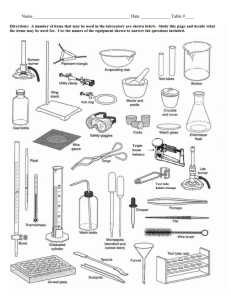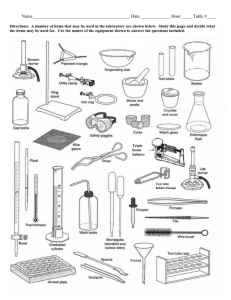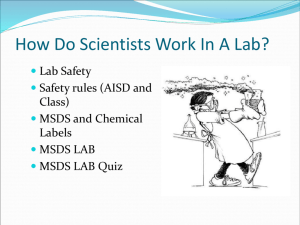Student Resource Sheet: The Lab Accident at Jefferson High
advertisement
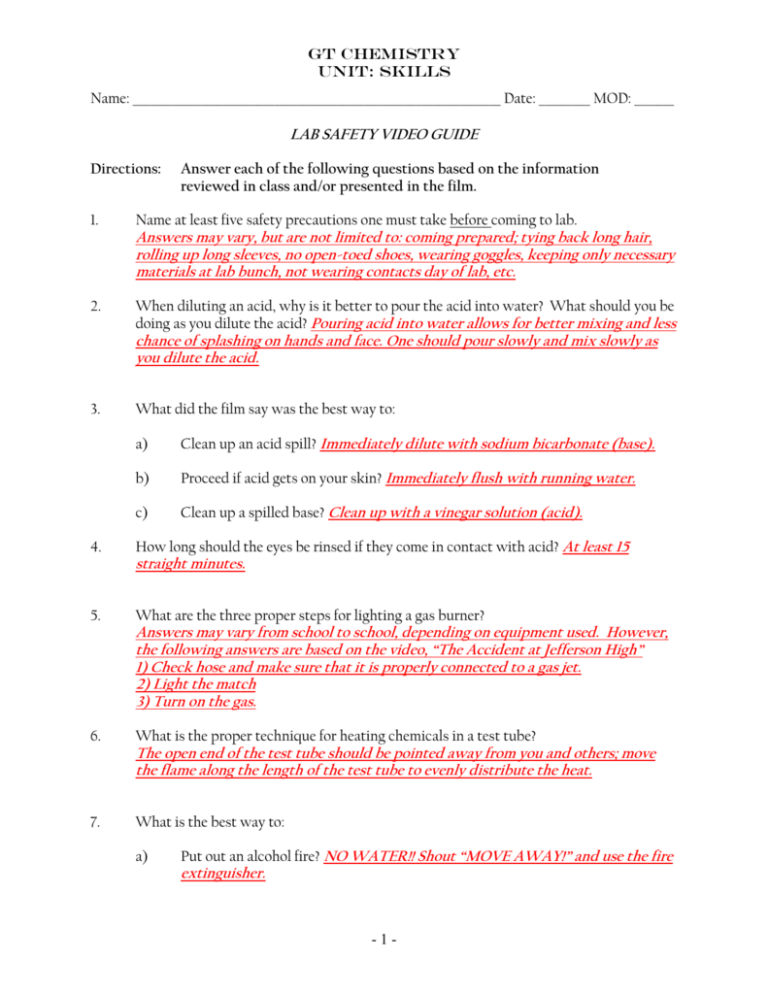
Gt chemistry Unit: skills Name: _________________________________________________________________ Date: _________ MOD: _______ LAB SAFETY VIDEO GUIDE Directions: 1. Answer each of the following questions based on the information reviewed in class and/or presented in the film. Name at least five safety precautions one must take before coming to lab. Answers may vary, but are not limited to: coming prepared; tying back long hair, rolling up long sleeves, no open-toed shoes, wearing goggles, keeping only necessary materials at lab bunch, not wearing contacts day of lab, etc. 2. When diluting an acid, why is it better to pour the acid into water? What should you be doing as you dilute the acid? Pouring acid into water allows for better mixing and less chance of splashing on hands and face. One should pour slowly and mix slowly as you dilute the acid. 3. 4. What did the film say was the best way to: a) Clean up an acid spill? Immediately dilute with sodium bicarbonate (base). b) Proceed if acid gets on your skin? Immediately flush with running water. c) Clean up a spilled base? Clean up with a vinegar solution (acid). How long should the eyes be rinsed if they come in contact with acid? At least 15 straight minutes. 5. What are the three proper steps for lighting a gas burner? Answers may vary from school to school, depending on equipment used. However, the following answers are based on the video, “The Accident at Jefferson High” 1) Check hose and make sure that it is properly connected to a gas jet. 2) Light the match 3) Turn on the gas. 6. What is the proper technique for heating chemicals in a test tube? The open end of the test tube should be pointed away from you and others; move the flame along the length of the test tube to evenly distribute the heat. 7. What is the best way to: a) Put out an alcohol fire? NO WATER!! Shout “MOVE AWAY!” and use the fire extinguisher. -1- Gt chemistry Unit: skills b) Put out a fire on your clothing? Smother with a fire blanket –OR- Stop, Drop, and Roll. 8. How should chemicals be disposed of when cleaning up after lab work? In specific containers – never down the sink unless otherwise instructed to. 9. List 3 – 4 considerations when storing chemicals. Answers may vary. These are some of the possible answers that come from watching the video. 1) Alphabetical order (within appropriate grouping system.) 2) Separate flammables and organic chemicals from other chemicals. (Again, storage grouping guidelines.) 3) Caustic materials on lower shelves. 4) Incompatible chemicals stored separately. 5) Chemicals labeled appropriately. -1-
